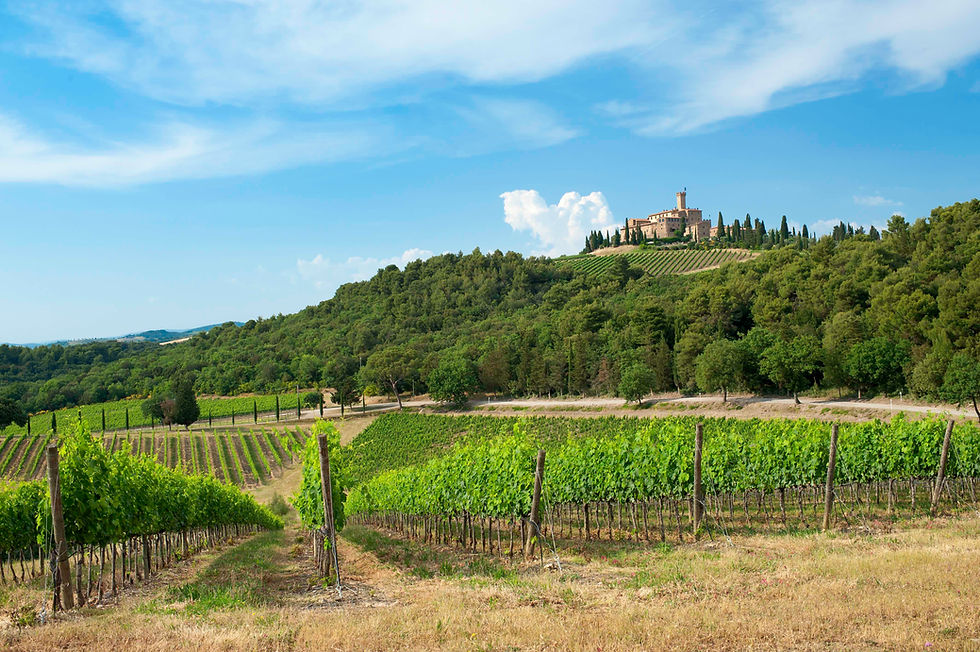After tragedy, Italy's Taurasi wines rise again
- Jacopo Mazzeo

- Mar 11, 2024
- 3 min read
"I saw the South die." That was Italian novelist Alberto Moravia’s account of the devastating 1980 earthquake that killed nearly 3,000 people and left a quarter of a million homeless in Irpinia. This area in the Italian region of Campania, due east of Naples, has in modern times endured the hardship of not one but two major earthquakes (the first was in 1930), along with a devastating post-war crisis and the penetration of organised crime, locally called the Camorra.
These troubles took a toll on the region’s fragile economy, including its viticulture. Taurasi, Irpinia’s Aglianico-based red wine, still bears the scars.

But Taurasi is once again ascendant. This earthy red contradicts the rich and jammy Mediterranean stereotype, as its assertive acidity, tannic structure, depth, and aging potential make it comparable to Italy’s most sought-after wines. Indeed, these qualities once justified Taurasi’s historical title: “Barolo of the south.”

A wine with ancient roots
The Aglianico grape has been at home in Irpinia for millennia. Researchers believe it was brought there by Greek settlers around the 7th century BCE, and it’s now well suited to the region. High altitudes help the wines retain fresh flavors and vibrancy and mitigate Campania’s hot summers. The long, dry ripening season often extends harvest into early December, which allows Aglianico’s potentially ferocious tannins plenty of time to round off. Meanwhile, strong diurnal temperature variations prevent the grape’s acidity levels from dropping.
Despite Taurasi’s long heritage, producers only embarked on a proper quest for identity and sense of belonging in the late 2000s. The process involved developing a deeper understanding of the region’s viticultural diversity. “We’ve been talking more and more about four subzones, identified by different altitudes, soils, and optimal ripening seasons, all of which, of course, have an effect on wine style,” says Daniela Mastroberardino of Terredora, one of Irpinia’s pioneering producers.
Antonella Lonardo, of Cantine Lonardo, explains that her small family winery has always vinified plots separately, “but in the past we wouldn’t have the courage to bottle them as individual products,” she said. “Later on, around 2007, we realised they were clearly recognizable and identifiable, so we began bottling different single-vineyard expressions.”
Antonio Capaldo, chairman of leading Irpinia producer Feudi di San Gregorio, took the scrutiny of Taurasi’s subzones to the next level when, just over a decade ago, he launched FeudiStudi, a project aimed at studying the diversity of Irpinia’s three DOCGs: Greco di Tufo, Fiano di Avellino, and Taurasi. The investigation entailed working with over 700 vineyard areas across the denomination, “monitoring, managing, and learning.”

Renewed appreciation
The FeudiStudi project results for Taurasi, released last year, show that the boundaries of the denomination’s four subzones run along the Calore River and a creek called Fredane.
Vineyards in the southeastern subzone, enclosed by both the Calore and the Fredane, are some of the highest in the area, lying between 1,600 and 2,000 feet of elevation. These areas generate fresh and elegant wines.
Meanwhile the northeastern area, which includes the region surrounding the town of Taurasi itself, yields “classic” wines, “lively and flavoursome on the palate” without excess alcohol, acidity, or tannins.
The upper left bank is responsible for much of Taurasi’s entry-level labels, wines with lower alcohol content, gentler tannins, and fruit-forward personality. The lower left bank is a more heterogeneous area.
By coming to grips with topographic diversity and exploring Aglianico’s versatility, winegrowers are finally maximising Taurasi’s potential and producing a wine whose structure, intensity, and longevity “easily fascinates and intrigues any enthusiast who comes across it,” as Capaldo puts it. And they offer extremely good value, too — at least for now.
Three to try

Cantine Lonardo Taurasi
The wine suggests balsamic notes and is a little meaty, with plenty of dark berries and a touch of tar.
The palate is deep and fleshy, with a vibrant, savoury, slightly bitter finish. Its aromatic intensity and tenacious tannic structure are best enjoyed with flavourful meat dishes; try goat or wild boar.

Terredora Pago Dei Fusi Taurasi
The wine is full-bodied with a spicy character, plus exuberant maraschino cherry aromas and profound tobacco and woody notes.
It’s a persuasive liquid whose tannins are robust yet pleasant.

Feudi di San Gregorio Piano di Montevergine Riserva Taurasi
This bottling offers dark berry fruits first, then sweet spices and a satisfying balsamic note. It has generous fruit and polished tannins.
Tones of vanilla from 18 months in French barriques are evident but judiciously integrated into the wine’s aromatic palette.
A version of this article was first published in The Drop / Pix Wine in June 2021







Comments